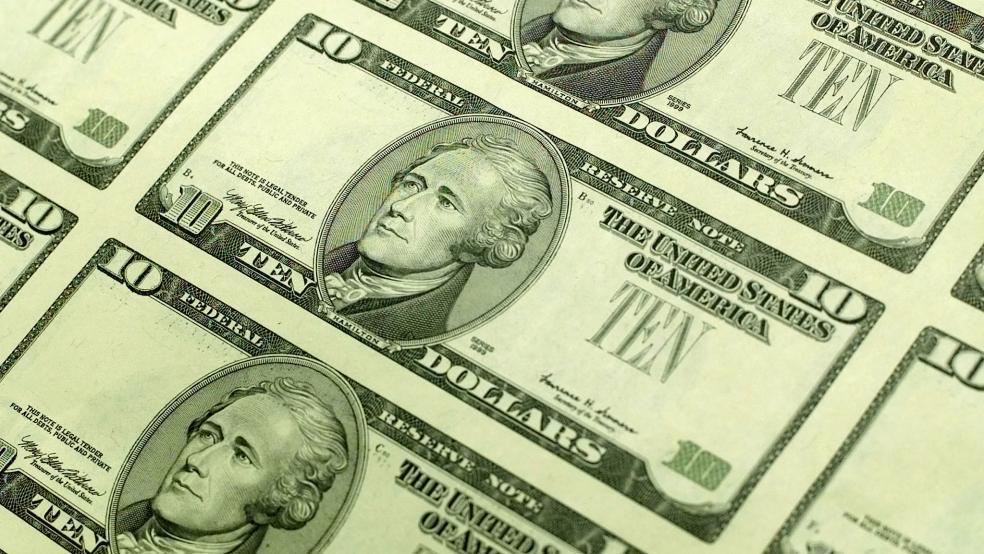Treasury Secretary Jack Lew announced last week that the redesigned $10 bill set to be unveiled in 2020 would feature the portrait of a notable woman, marking the first time in more than a century that a female would be so honored on U.S. paper currency.
The news was greeted with great fanfare in progressive circles and for a brief window last week (before darker matters took over) it was the talk of the Internet. The lack of details in the announcement left plenty of room for speculation and debate over exactly which woman should and would be gracing our currency. And the backlash, to the extent that there was any, was mostly along the lines of, “Don’t we have more important things to worry about?”
Related: 10 Women Who Could Be on the New $10 Bill
But today, writing on his blog for the Brookings Institution, former Federal Reserve Chair Ben Bernanke took issue with the planned change. “I must admit I was appalled to hear of Treasury Secretary Jack Lew's decision last week to demote Alexander Hamilton from his featured position on the ten dollar bill,” Bernanke wrote.
Bernanke isn’t objecting to the addition of a woman to U.S. bills, which he describes as “a fine idea”, but rather the choice to remove Alexander Hamilton. (Hamilton will still feature on the new $10 in some manner, and the Treasury Department says producing two versions of the bill is an option.)
Bernanke is absolutely right. Though largely remembered as the loser in a duel with Aaron Burr, Hamilton was unquestionably one of the most influential founding fathers. Hamilton is by and large the man responsible for creating our economic system. He was the first Secretary of the Treasury, and as the main force behind the establishment of the U.S. Mint, probably has more business being on national currency than anyone. Were he not born out of wedlock in the Caribbean, he almost certainly would have been one of the nation’s early presidents.
What is especially baffling is that there is a much more obvious candidate for replacement on our bills —a candidate so obvious that almost every critic of the decision (including Bernanke) has scratched their heads and asked, “Why not Andrew Jackson?”
Washington and Lincoln are unassailable choices (as is Jefferson, if we count the $2). Grant was the winning general of the Civil War, and was instrumental in the Reconstruction of the South. Ben Franklin is one of both the nation’s and the world’s most influential — and frankly, coolest — individuals.
Jackson…is harder to explain.
Related: Move Over, Alexander. Here’s Who We Want to See on the $10 Bill
In his time, Jackson was an immensely popular figure, but much of that popularity was due to his success in battle against Native Americans, hardly something we celebrate now. His victory in New Orleans during the War of 1812 is most famous for being exciting but also for coming after the war had technically ended.
His presidency is little better, filled with the kind of tawdry scandals and partisanship that we associate more closely with modern presidents and a continued appalling treatment of Native Americans, including the infamous “Trail of Tears.”
Jackson was famously ornery. The story of the first ever presidential assassination attempt ends with the assassin’s gun misfiring and the elderly Jackson beating the man down with his cane. It’s a great story, but representative of the entertaining type of cranky old SOB he was rather than of the qualities that make presidents exceptional.
“Given his views on central banking, Jackson would probably be fine with having his image dropped from a Federal Reserve note,” Bernanke suggests.
Given all of this, and the many reasons to continue to celebrate Hamilton, why is the $10 the one to get a facelift?
Lew explained that the $10 bill was the next one to be redesigned, primarily based on how secure our various notes are from counterfeiters. But factors like the production volume of various bills and how much they are used also play a part. Currently, there are 6.26 billion $20 bills in circulation and only 1.63 billion $10s. At the end of the day, the decision comes down to dollars and cents. At least we know that Alexander Hamilton would have appreciated the economics at play.
Top Reads from The Fiscal Times:




